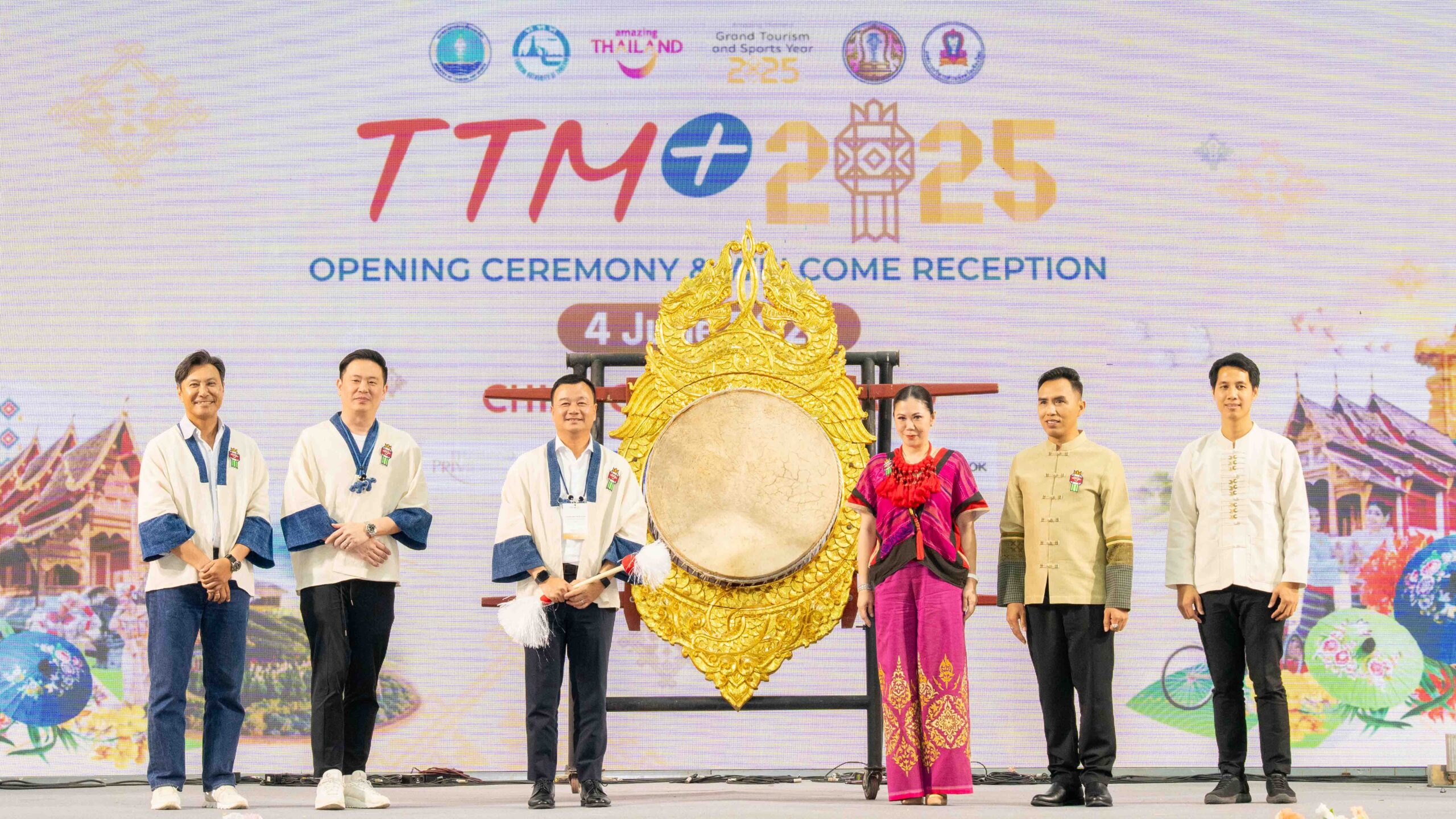Thailand, Bhutan, Myanmar, and Cambodia have united at the Thailand Travel Mart Plus (TTM+) 2025 in Chiang Mai to bolster regional tourism cooperation. Held from June 4–6, 2025, this premier travel trade event, organized by the Tourism Authority of Thailand (TAT), underscores a shared commitment to sustainable tourism and cultural exchange across Asia.
The event brought together over 400 international buyers from 51 countries and 450 Thai sellers, facilitating more than 13,000 business appointments. Delegates from the Greater Mekong Subregion (GMS), including Myanmar and Cambodia, alongside representatives from Bhutan, participated in the event, highlighting the region’s collaborative efforts to enhance tourism offerings.
Strengthening Regional Ties
Thailand’s initiative to strengthen regional tourism ties is evident in its partnerships with neighboring countries. The event provided a platform for promoting cross-border tourism through closer collaboration with Myanmar and Cambodia, as well as a special focus on Bhutan. Notably, Thailand and Bhutan launched the “Two Kingdoms, One Destination” initiative, which aims to create shared travel experiences that promote mutual knowledge exchange between the two nations. This initiative is part of a Memorandum of Understanding (MOU) signed to foster sustainable tourism practices and the development of high-value travel experiences.
In addition to Bhutan, Thailand’s collaboration with Myanmar and Cambodia is central to developing tourism infrastructure that supports seamless travel across borders. The strengthening of these relationships is integral to achieving Thailand’s broader vision of becoming the central tourism hub in the ASEAN region. Through partnerships like these, Thailand seeks to position itself as a gateway to Southeast Asia, connecting neighboring countries to promote joint tourism campaigns and create cohesive travel itineraries that benefit all parties involved.
The tourism cooperation efforts are also backed by the broader ASEAN framework, which prioritizes regional economic integration, environmental sustainability, and cultural preservation. By coordinating tourism efforts and aligning public relations strategies with neighboring countries, Thailand aims to create a more robust and sustainable regional tourism ecosystem.
Promoting Multi-Modal Travel Routes
At TTM+ 2025, discussions focused on developing multi-modal travel routes that facilitate easier travel across the Greater Mekong Subregion (GMS) and neighboring countries. These new travel routes are designed to enhance regional connectivity and simplify travel logistics for tourists, encouraging cross-border exploration.
Self-Drive Caravan Routes
One of the most exciting initiatives introduced is the self-drive caravan routes that link Thailand with neighboring countries such as Lao PDR, Cambodia, and Vietnam. These caravan routes provide tourists with the flexibility to explore the region at their own pace, offering a unique and personalized travel experience. The self-drive routes are expected to attract independent travelers who are keen on exploring remote areas, scenic landscapes, and off-the-beaten-path destinations that may not be as accessible by public transport.
Railway Links
Additionally, Thailand is working on a railway tourism project that connects Bangkok Aphiwat Central Station to Khamsawat Station in Lao PDR, with future plans for extending the link to Kunming, China. This railway network is seen as a game-changer for regional travel, as it will allow tourists to easily access key destinations across Southeast Asia. Railway travel is considered a sustainable and efficient form of transport that also offers travelers a chance to experience the diverse landscapes of the region in a relaxed and comfortable manner.
Cruise Tourism
Cruise tourism is another promising development in the region, with Laem Chabang Port positioned as a key regional embarkation hub. This port connects Thailand to several neighboring countries, including Vietnam, Cambodia, Malaysia, and Singapore, and will cater especially to first-time international visitors. By positioning Laem Chabang as a cruise tourism hub, Thailand aims to tap into the growing demand for maritime travel, offering tourists a chance to explore multiple countries in Southeast Asia via the sea.
These multi-modal travel routes align with Thailand’s “Ease of Travelling” strategy, which prioritizes seamless mobility and coordinated efforts between public and private sector partners at both domestic and international levels. By facilitating easier travel between countries, these routes will help attract more international tourists and promote cross-border tourism.
Cultural Immersion and Sustainable Practices
As part of the event, participants engaged in immersive cultural experiences under the “5 Must Do in Thailand” concept: Must Taste, Must Try, Must Buy, Must Seek, and Must See. Highlights included sampling Khao Soi, a northern Thai curry noodle dish; experiencing the ‘Fon Leb’ finger dance massage at Zira Spa in Chiang Mai; shopping for locally crafted handicrafts; exploring Chiang Mai’s historic landmarks; and immersing themselves in the area’s rich cultural life.
These activities not only showcase Thailand’s rich cultural heritage but also emphasize the importance of sustainable tourism practices. The event was recognized as a carbon-neutral gathering, with efforts to reduce waste, increase recycling, and repurpose materials, demonstrating Thailand’s leadership in responsible tourism practices.
Looking Ahead
The success of TTM+ 2025 highlights the growing importance of regional cooperation in the tourism sector. By fostering partnerships and promoting sustainable travel, Thailand and its neighboring countries are paving the way for a more interconnected and culturally rich ASEAN tourism landscape.
As the region continues to collaborate and innovate, the future of tourism in Southeast Asia looks promising, with enhanced connectivity, shared cultural experiences, and sustainable practices at the forefront.
Conclusion:
The Thailand Travel Mart Plus (TTM+) 2025 in Chiang Mai served as a significant platform for strengthening regional tourism cooperation among Thailand, Bhutan, Myanmar, and Cambodia. Through strategic partnerships, the promotion of multi-modal travel routes, and a commitment to sustainable tourism practices, the event underscored the shared vision of these nations to enhance cultural exchange and economic growth across the ASEAN region.
Tags: Thailand, Bhutan, Myanmar, Cambodia, Thailand Travel Mart Plus (TTM+) 2025 Chiang Mai Tourism Authority of Thailand (TAT)
